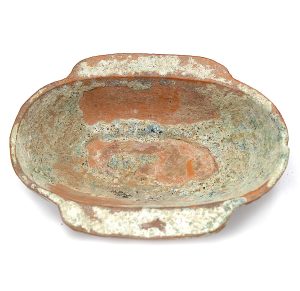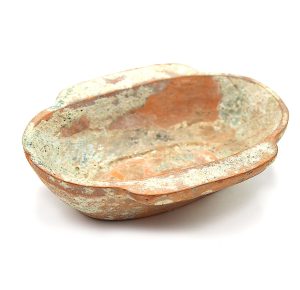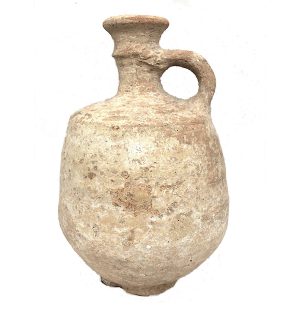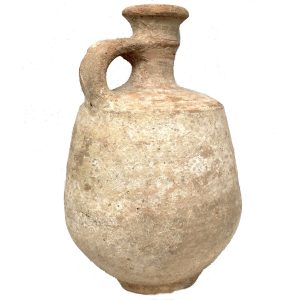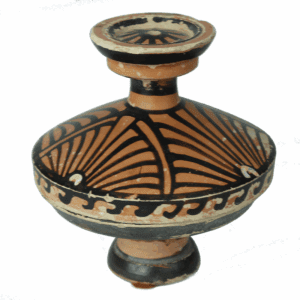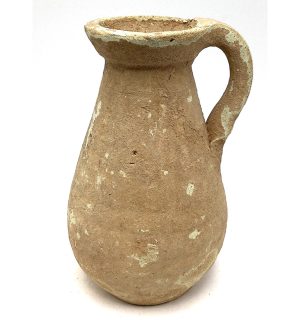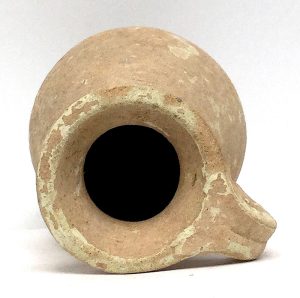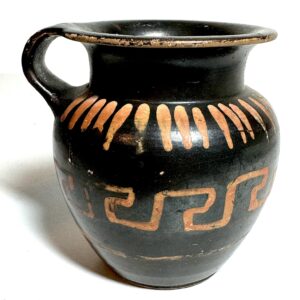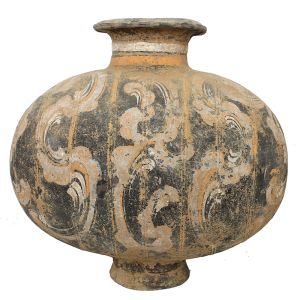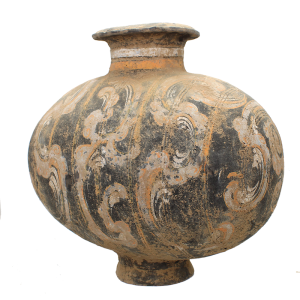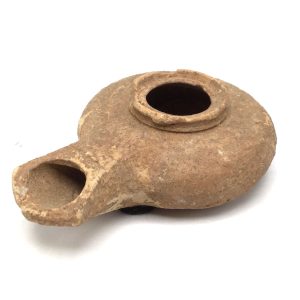-
Sale!


$225.00 Original price was: $225.00.$125.00Current price is: $125.00.
Ht: 4.625″ Dia: 3.625” | FREE SHIPPING WITHIN CONTINENTAL U.S.!
Most small utilitarian pottery jars like this were made in ceramics centers in Africa-Proconsularis, the Roman North Africa territories and were either a perfume, oil, ointment or cosmetic jars. Wheel made it is simple with grooved furrows etched on the surface.
-
Sale!


$450.00 Original price was: $450.00.$310.00Current price is: $310.00.
H: 1.5″ W: 5.125 ” D: 3.875 ” | FREE SHIPPING WITHIN CONTINENTAL U.S.!
Used for rituals and ceremonies, lead green glazed earthenware wing cups were popular burial objects. The tomb’s humidity caused the lead to oxidize to a lustrous, prized iridescent, silver-green.
-
Sale!


$395.00 Original price was: $395.00.$305.00Current price is: $305.00.
H: 2.5″ W: 4.5″ D: 2.375″ | FREE SHIPPING WITHIN CONTINENTAL U.S.!
This diminutive mingqi pig is totally charming and fanciful with an iridescent glaze and would be especially appealing as a send off for the deceased to the nether world or in a contemporary setting. Pigs were especially prized and images were often included as items the deceased would need to live comfortably in the after life.
-
Sale!


$695.00 Original price was: $695.00.$425.00Current price is: $425.00.
H: 8.5” Dia: 5.5” | FREE SHIPPING within Continental U.S.!
Wine jugs from in the Judean Holy Land at the time of the first Jewish Temple were used for religious ceremonies and wine blessing as an important Jewish prayer. This carinated piece was made using the coil construction method and the paddle and anvil technique.
-
Sale!


$595.00 Original price was: $595.00.$395.00Current price is: $395.00.
Ht: 3.5” Dia: 3.5” FREE SHIPPING WITHIN CONTINENTAL U.S.!
This highly decorated ancient lekanis from Apulia in Magna Graecia, the Roman name for the South Italy coastal area, with close-fitting top held cosmetics. Considered fine ware, fathers filled them with jewelry for their daughters’ wedding gifts.
-
Sale!


$275.00 Original price was: $275.00.$210.00Current price is: $210.00.
H: 4.5” W: 3” D: 2.75” | FREE SHIPPING WITHIN CONTINENTAL U.S. !
Greek style Oenochoe wine jugs were made in Roman North Africa and exported throughout the empire. Potters wheel made unadorned coarse wears like this small vessel with everted rim were made for daily use and for offerings to deities.
-
Sale!


$495.00 Original price was: $495.00.$325.00Current price is: $325.00.
H: 3.125” W: 3” D: 2.875” | FREE SHIPPING IN CONTINENTAL U.S.!
This miniature 4th century B.C.E elegantly xenon ware pottery vessel with flared rim, handle, with painted orange geometric designs from Apulia, in Southeastern Italy, may have been made for children or as a votive vessel.
-
Sale!


$2,100.00 Original price was: $2,100.00.$1,700.00Current price is: $1,700.00.
H: 11.75” W: 12.25” CALL 213-568-3030 OR EMAIL [email protected] FOR SHIPPING.
Families placed cocoon jars with auspicious designs containing magical mixtures of mulberry leaves in tombs for souls of the departed to drink for a transformative afterlife. Ovoid shaped, it rests on a trumpet-shaped foot decorated with elegant cloud scrolls and circular “eye” motifs.
-


$155.00
Early Christianity oil lamps were also seen as a symbol of light and a manifestations of the presence of the divine.
End of content
End of content



